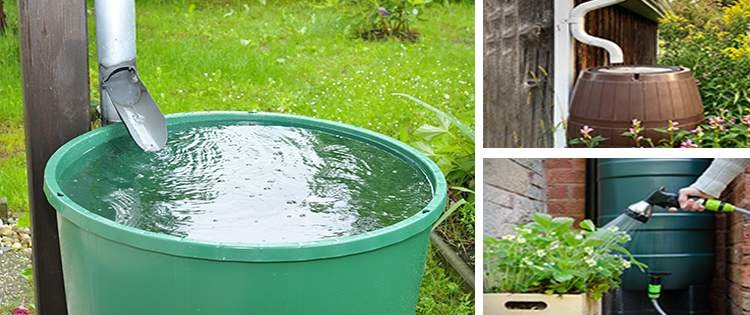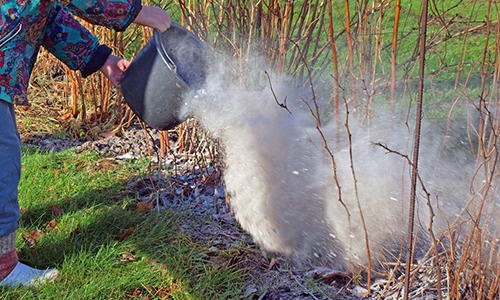Sage is a herb that has been used for centuries in cooking and medicine. Its unique scent and flavour make it a popular component in many recipes, particularly those from the Mediterranean and Middle East. Furthermore, growing sage at home is simple and gratifying because it takes little care and can thrive in a range of environments.
In this guide, we’ll look at the various advantages of growing sage at home, as well as present a step-by-step guidance to get you started. You’ll learn all you need to know about cultivating this aromatic herb in your own garden, from sowing the seeds to collecting the leaves. So let’s get started and explore the delights of growing fresh sage at home!
A Brief History
Sage (Salvia officinalis) is an evergreen perennial herb of the Lamiaceae mint family. It is native to the Mediterranean region and has been grown for thousands of years for culinary and medicinal purposes. Sage was highly prized for its therapeutic virtues in ancient times, and was used to cure a range of diseases, including digestive difficulties, sore throat, and memory loss. It was also utilised as a natural cure for air purification and warding off bad spirits.
The virtues of sage were known by the ancient Greeks and Romans, who considered it a sacred herb. They believed it might boost mental clarity and recall and would frequently eat it prior to important occasions like as exams and speeches. Sage was also employed in religious events, and it was thought that burning sage cleansed the body and spirit.
Sage became a common cooking herb in mediaeval times, particularly in recipes including fatty meats. Its pungent flavour was employed to disguise the taste of the meat and to ease digestion. Sage was also utilised as a natural food preservative since it contains antibacterial characteristics that inhibit bacterial development.
Sage is now widely grown and used for both culinary and medicinal purposes all over the world. Its distinct flavor and perfume make it a popular component in a variety of recipes, and its therapeutic benefits are still being researched and employed.
Nutritional Benefits
Sage is known for its many health benefits, including its nutritional value. It is packed with essential vitamins and minerals, including vitamins A, K, and E, and minerals such as magnesium, zinc, and copper. These vitamins and minerals are essential for a healthy body and mind.
Sage is also high in antioxidants which can help reduce the risk of serious health conditions like cancer. It is also thought to help lower cholesterol and blood sugar levels. Additionally, sage has been linked to improved memory and brain functioning as well as better oral health.
For those looking for ways to get a bit of variety in their diet, sage can be a great addition. It can be used in a variety of dishes from soups and salads to sauces and pastas. It adds a unique flavor to any dish it is added to that compliments other herbs or spices. Sage can also be added directly to teas or drinks for a unique flavor experience.
Overall, sage is an incredibly nutritious herb that can provide many benefits when included in the diet. Its unique flavor makes it an excellent addition to any dish while its nutritional benefits help support a healthy body and mind.
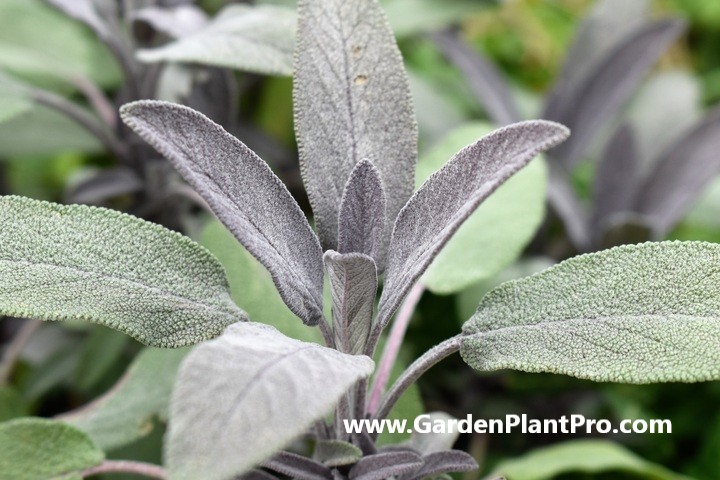
Common Varieties & Their Uses
Sage is an incredibly versatile herb that comes in many varieties.
Each type offers a different flavor or medicinal benefit, so it’s important to choose the right variety for your needs. Common sage varieties include Garden Sage (Salvia officinalis), Pineapple Sage (Salvia elegans), Anise Sage (Salvia guaranitica), and Clary Sage (Salvia sclarea).
Garden Sage, also known as Common or Culinary Sage, is the most widely used variety of sage. It has a strong, woody scent and its leaves are used to add flavor to savory dishes such as roast meats, stuffings, and sauces. Garden Sage is also known for its medicinal properties, including the ability to reduce inflammation and fight bacterial infections.
Pineapple sage has a sweet flavor with hints of pineapple. Its leaves can be used in salads, teas, and desserts. It can also be used to make a tincture that can help with digestion and nausea.
Anise sage has a licorice-like flavor and is often used as a flavoring for liqueurs and desserts. It can also be used to make an infusion that can help with indigestion and bloating.
Clary sage has a sweet flavor that many describe as slightly nutty or earthy. Its leaves are often used in potpourris and perfumes. It is also known for its calming properties and can be used to make an infusion that helps relieve stress and anxiety.
When choosing which variety of sage to grow, it’s important to consider what purpose it will serve in your garden. Some varieties are best suited for culinary use while others are better suited for medicinal use or ornamental purposes.
When in doubt, try growing different varieties to find out which one works best for you!
When To Sow
When it comes to sowing sage at home, timing is key.
Sage can be planted all year round, however it does better when planted in spring.
DIY PROJECT: Collect rainwater no matter where you live...
This DIY project is the best way to legally collect rainwater NO MATTER where you live. Get chlorine-free water, cut down on your water bills, and have enough for an emergency situation or to water your garden. Read More Here...
The best time to sow sage seeds is in the spring, after the last frost has passed and the soil has warmed up. In warmer climates, sage can also be sown in the fall. If you choose to start from seed, start them indoors 6 to 8 weeks before the last frost under a plant light.
Once seedlings have grown, they can be transplanted outdoors. Plant the seeds or seedlings in an area with full sun and good drainage. Sow seeds, cover lightly with seed raising mix and water regularly. As a general rule of thumb, sage requires 1 inch of water per week. If rainfall is insufficient, supplement with regular watering.
Choose The Right Location
When it comes to choosing the right location for planting sage, there are a few key points to consider. First, you’ll want to find an area in your garden that receives full sun for the majority of the day. Sage requires at least 6-8 hours of direct sunlight each day to thrive.
Additionally, ensure that the soil is well-draining; sage doesn’t tolerate sitting in wet soil. If you’re planting sage in containers, select a pot with a drainage hole in the bottom and use a soil mix specifically designed for container plants.
It’s also important to choose an area that has some protection from cold winds; this will help to protect the foliage of your sage plants from damage. Furthermore, if you are growing annual or biennial sages (such as common garden sage), choose a spot that is out of direct foot traffic as these sages are more delicate than perennial varieties.
Finally, remember that sage likes a free draining soil that is rich in organic matter such as compost or manure. If your soil is heavy or clay-like, consider digging in some organic matter before planting to ensure success.
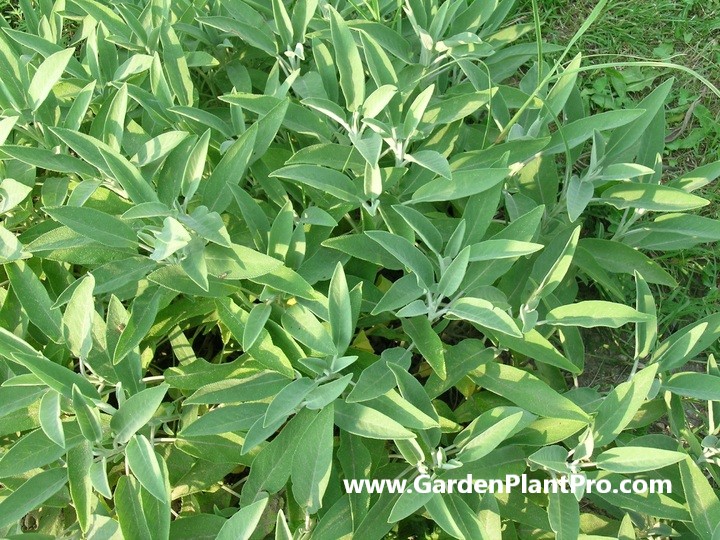
Prepare The Soil
When it comes to growing sage, proper soil preparation is essential.
The best soil for growing sage is one that is well-draining, with a pH of 6.5 to 7.0. If your soil is too acidic, you can add lime to raise the pH level. It’s also a good idea to mix in aged manure and compost when planting sage, as this will help improve the soil’s fertility and structure. For best results, mulch each year to retain moisture and suppress weeds.
When planting sage in heavier clay soils where drainage may be an issue, create mounds or raised beds to ensure adequate drainage. You may also need to add organic matter such as compost or aged manure to help break up the clay particles and improve its structure. Additionally, avoid planting in areas that are prone to flooding or standing water as this will cause the roots of the plant to rot.
Plant The Seeds Or Seedlings
Once you have chosen the right location and prepared the soil, it’s time to plant the sage seeds or seedlings. If you choose to start from seed, start them indoors 6 to 8 weeks before the last frost under a plant light. Planting sage seeds requires patience, as sage seeds are slow to germinate. Scatter the seeds over seed starting soil and cover them with a thin layer of soil mix. Use a good soilless seed-starting mix to plant your sage seeds, such as this easy-to-make mix. Dampen the mix before you plant the seeds. To plant the sage seeds:
1. Fill seedling pot to around three-quarters full with potting mix.
2. Place seeds on top of the soil – you can put several in each pot, as they will need to be thinned out later.
3. Cover with a thin layer of soil mix and gently press down to ensure good contact with the soil beneath.
4. Water lightly but regularly until germination occurs – this could take up to 4 weeks or more!
5. When your sage plants are established and seedlings have developed two true leaves, carefully thin out any overcrowded seedlings, leaving only one in each pot.
When starting from seedlings, make sure that you buy healthy plants from a reliable source and then transplant them into your prepared bed following the same steps outlined above for sowing from seed – but with no need for thinning out.
For those looking for an easy way to propagate sage at home from an existing sage plant, layering is an ideal method. To do this take a long stem and secure it along the soil with wire or pegs, leaving four inches of the tip exposed. Cover with and firm down the soil gently and water well with an organic garden booster or other fertilizer specifically formulated for herbs such as sage.
Do you have some charcoal in your house right now? We call charcoal a “miracle leftover” for anyone who wants to be a little more self-sufficient and cut costs. That’s because it can help you with so many different things around the house and garden. You can even use it to make an energy-free fridge. Read More Here...
With proper care, you should see new shoots start appearing in no time.
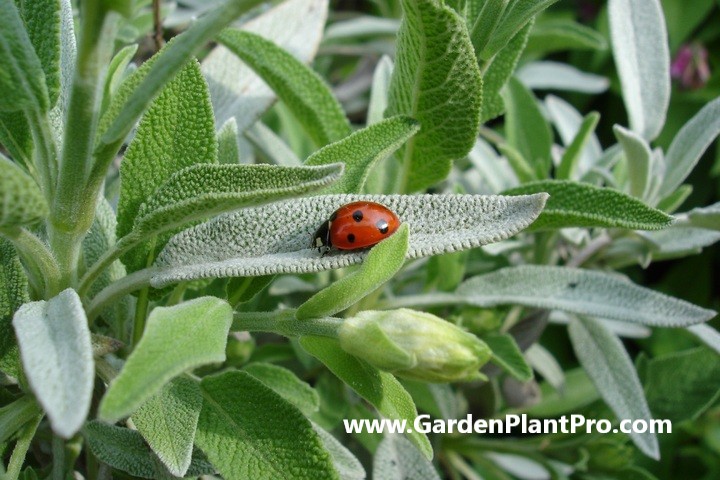
Water Regularly
Watering your sage regularly is essential for healthy growth and a bumper crop.
To ensure optimal growth, the soil should remain moist but not waterlogged. For young plants, water every few days until they are fully grown. Once established, sage is known as a ‘dry herb’ and can withstand drier soil conditions in summer.
In extended dry periods, additional watering may be needed to keep the soil moist.
Good drainage is also important for sage. If you are planting in a pot, ensure it has adequate drainage holes and add pebbles or stones to the bottom to help with this. For ground-level planting, consider adding compost or a mulch layer to help retain moisture and improve drainage.
Harvesting your sage regularly will also encourage new leafy growth and a larger yield of leaves. Pick leaves from the outside of each stem as needed and remove any flowers to encourage more leafy growth.
Fertilizing
Fertilizing is an important part of growing sage.
When you first plant sage, work a 5-5-10 fertilizer into the soil at the rate of half a pound to 100 square feet. This will give your sage a head start and help it become established. After that, a little side dressing of compost or compost tea twice during the season can help replenish the nutrients in the soil. At the start and end of summer, sprinkle a couple of handfuls of bonemeal or other slow-release fertilizer around the sage plants to give them an extra boost.
However, too much fertilizer can be detrimental to your sage plants and can cause them to become overgrown and leggy. Sage doesn’t need much fertilizer, so it’s important to not over-fertilize them.
A dose of fish emulsion in the spring will keep your plants in peak form and should be enough for most gardens. It’s also important to remember to pinch back long stems on your plant as this will help promote bushier growth.
Finally, remember that sage only needs to be watered during dry spells. During humid months or rainy seasons, you can often skip watering altogether unless there is an extended dry period that lasts more than a week or two.
When & How To Harvest
Harvesting sage is an important part of gardening with this herb.
Sage can be harvested as needed, by snipping off small sprigs or pinch off leaves from the plant. It is best to harvest sage in the morning after the dew has dried, as this is when the flavor of the leaves is at its peak. For a richer flavor, it can also be harvested just before flowering. When harvesting, it is important to clip just above the spot where two leaves meet.
It is also important to keep sage well pruned in order to encourage healthy growth and to prevent it from becoming straggly or woody. Pruning should be done in early spring, by cutting back by at least one third of the plant’s growth. This will help promote new growth and will keep the plant looking lush and full.
Sage can be harvested throughout the growing season, but it is best to do so before the hottest part of summer arrives. This will ensure that the herb remains full of flavor and won’t become overly woody or bitter. Once harvested, sage can be stored for later use either by drying or freezing it. It can also be used fresh in a variety of dishes, such as sauces, dressings and teas.
Storing & Preserving
When it comes to storing and preserving your sage, there are a few options.
For the freshest flavor, store sage in the freezer. Freeze leaves or stalks on a tray, then move the leaves into a zippered bag or container. Sage leaves can also be kept in the fridge, frozen, dried, or preserved in oil. If stored in the fridge, sage leaves will keep for up to a week.
CASE STUDY: We've been living off the grid for the last 40 years...
In all that time an electric wire has never been connected to our house. We haven’t gotten or paid an electricity bill in over 40 years, but we have all the electricity we want. We grow everything we need, here, in our small backyard. We also have a small medicinal garden for tough times. Read More Here...
If you’d like to keep your sage for a longer period of time, it is possible to dry and preserve it. To dry, tie bunches of sage together with kitchen string and hang upside down in an area with good air flow. Once completely dry, store in an airtight container.
To preserve in oil, simply fill a jar with your favorite cooking oil (olive oil is popular) and add fresh sage leaves. Ensure that all of the leaves are fully submerged by adding more oil as needed. Cover tightly and store in the refrigerator for up to three months.
Whether you opt to freeze your sage, dry it, or preserve it in oil, it can be used all year round and added to any number of dishes for that garden-fresh flavor you love!
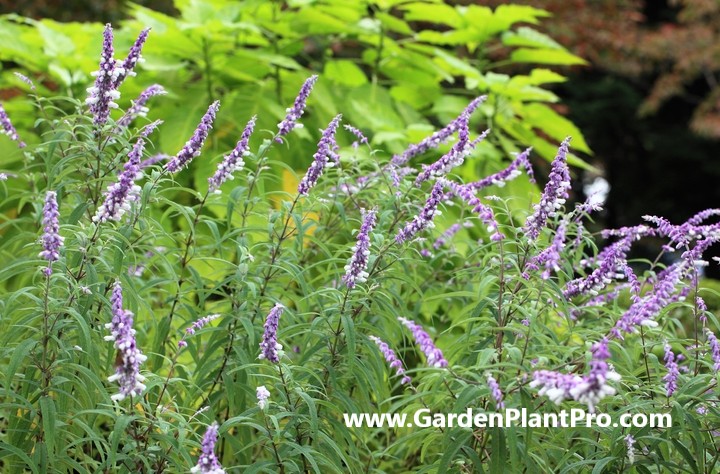
Common Diseases & How To Control Them
Sage is a popular herb for many culinary and medicinal uses. It is generally pest and disease free, but can be susceptible to mildew, fungal diseases, and other issues.
To ensure your sage plants remain healthy and vigorous, it is important to understand the common diseases that can affect them, and how to control them.
Mildew is one of the most common issues affecting sage plants. This is especially true if they are grown in humid climates or planted too closely together and overwatered. To control mildew, pinch off or snip small sprigs from the plant when you first notice it. You can also reduce the risk of mildew by keeping your sage well-spaced, allowing for good air flow around the plants.
Foliage can also be affected by fungal diseases such as powdery mildew and verticillium wilt which can disfigure leaves under severe circumstances. To control these diseases, you should ensure your sage plants are getting enough sunlight, water them deeply with mulch applied to help retain moisture in the soil, and maintain a pH level between 6-7.5 in your soil. You should also remove any diseased leaves or branches immediately to prevent the spread of infection.
After 3-4 years of growth, you may notice that the vigor of your sage plants decline. Sage is considered a short-lived perennial so it is wise to replace your old plants with new ones every few years to ensure continued health and productivity.
To prevent common diseases from affecting your sage plants, it is important to provide them with good growing conditions such as fertile soil, good drainage, adequate sunlight and water, and regular fertilization during the growing season (spring and summer).
Additionally, be sure to keep an eye out for pests such as aphids or spider mites, which can cause damage to foliage if left unchecked.
Finally, remember to remove or ‘pinch’ blooms regularly if you want to encourage more leaf growth. Sage plants tend to produce small, purple-blue flowers in early summer, which can be attractive to bees and other pollinators. However, allowing the plant to flower can redirect energy away from leaf production, resulting in a smaller and less flavorful harvest.
To prevent this, simply pinch off the buds as soon as they appear or cut back the entire plant after it has flowered. This will encourage the plant to produce more leaves and maintain its shape and compactness. With these simple steps, you can enjoy a healthy and productive sage plant in your home garden.
Common Pests & How To Control Them
Sage can attract a number of pests that can cause damage and harm the health of the plant. The best way to control these pests is by taking a least-toxic approach. Common pests include spider mites, snails and slugs, and aphids.
Spider Mites
Spider mites are tiny arachnids that feed on plant sap and can form large colonies on the underside of leaves. To control spider mites, release or promote predatory insects such as lady beetles, green lacewings and predatory thrips. Spraying the plant with a narrow stream of water can also help remove these pests, as well as washing them off with insecticidal soap or neem oil solution.
Snails & Slugs
Snails and slugs eat foliage, leaving behind large, ragged holes in leaves. Yates Blitzem is an effective way to kill snails and slugs by dehydration. For severe infestations, it is important to remove them from the garden beds or pots as soon as possible to prevent further damage and potential death of the plant.
Aphids
Aphids are small sap-sucking insects that can be found on stems, leaves and flowers. They can cause stunted growth, wilting leaves and sticky secretions called honeydew. Sage has natural Aphid repelling properties, but if they do appear, to get rid of aphids, spray the sage thoroughly with an insecticidal soap solution or neem oil solution coating both sides of the leaves. Repeat this process every four to seven days as needed until they are gone.
Finally, keep in mind that preventive measures like regular inspection of plants for signs of pests and providing adequate nutrition for your sage can help limit infestations before they become a problem.
If you notice any signs of pest activity on your sage plants, take the following common sense, least-toxic approach to pest control: pinch off affected leaves or snip off small sprigs from the plant; spray with an appropriate insecticide; release or promote predatory insects; and water regularly to
Companion Planting
Companion planting is a gardening technique that involves planting complementary plants near each other in order to encourage healthy growth and reduce the likelihood of pest infestations.
When it comes to sage, the ideal companion plants are carrots, parsley, rosemary, tomatoes, oregano, and others. These plants will benefit from the pest-reducing properties of sage and will also add additional nutrients to the soil.
When choosing companion plants for sage, make sure to select ones that have similar requirements for light and water. Planting vegetables such as broccoli, Brussels sprouts, cabbage, carrots, cauliflower, kale and kohlrabi with sage will also create a balanced environment for the herb to thrive in. It’s also important to note that if you choose to let sage flower, lightly prune after flowering in order to encourage more leafy growth.
Rosemary is an excellent companion plant for sage as it has many of the same pest-deterring properties. Sage is also great for planting around celery crops as it helps keep aphids away. Placing these two herbs together can help create a thriving garden with fewer pest problems.
When planting companion plants with sage, make sure to give them plenty of room so they don’t compete for resources or shade each other out. Additionally, if you are looking for a more ornamental look in your garden space then lavender is an excellent option as it has a beautiful fragrance and attractive purple flowers.
By combining different plants when growing sage, you can create a healthier environment where your herbs can flourish without being overwhelmed by pests or competing with other plants for resources. With careful planning and selection of companion plants, you can create a well-balanced garden that promotes healthy growth and yields a greater harvest of herbs at the end of the season.
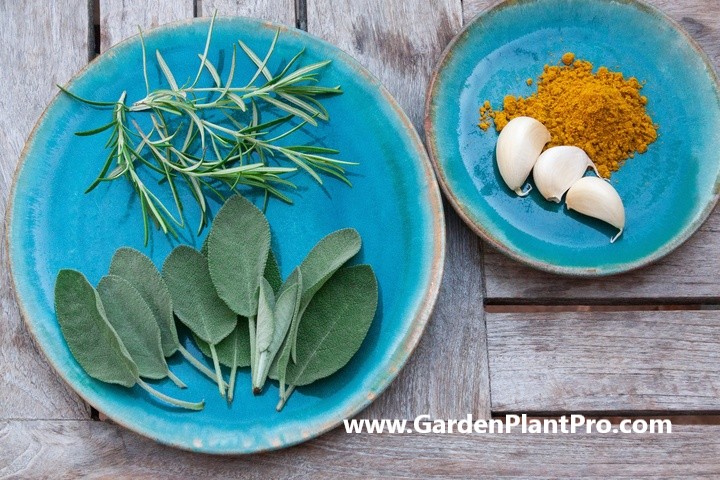
Using In Your Cooking
Sage is a versatile herb with a distinctive flavor that is popular in many dishes. To best enjoy the flavor of fresh sage, it’s best to add it near the end of the cooking process. Doing so will help preserve its delicate aromas and flavors.
Sage pairs well with roasted vegetables, grilled meats, and poultry. It can also be used to make pesto sauces, soups, and stews. For example, a classic Italian dish known as “sage and onion stuffing” combines sage with chopped onion, breadcrumbs and seasonings to make a delicious stuffing for poultry dishes.
Sage can also be used to make flavorful teas. Simply steep 1/2 cup of sage leaves in two cups of boiling water for 5 minutes. This tea can be enjoyed hot or cold and makes a great addition to any meal or snack.
Another popular way to use sage is in infused oils and vinegars. To make an infused oil, warm two cups of olive oil and 1/2 cup of fresh sage leaves over medium heat just until hot but not boiling. This will create an aromatic infusion that can be used in a variety of recipes such as salad dressings and marinades. Sage-infused vinegar can also be made by steeping fresh sage sprigs in white vinegar for 2-3 weeks then straining out the leaves before using.
Whichever way you choose to use sage in your cooking, you’ll be sure to enjoy the unique flavor that it has to offer.


